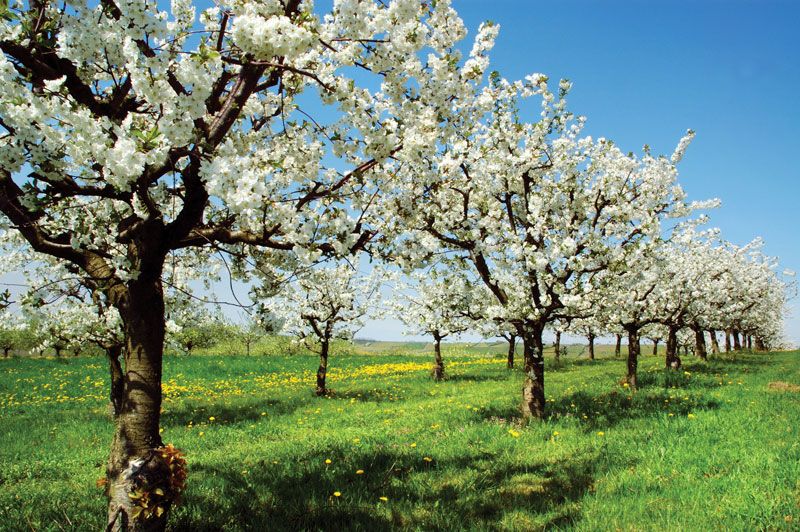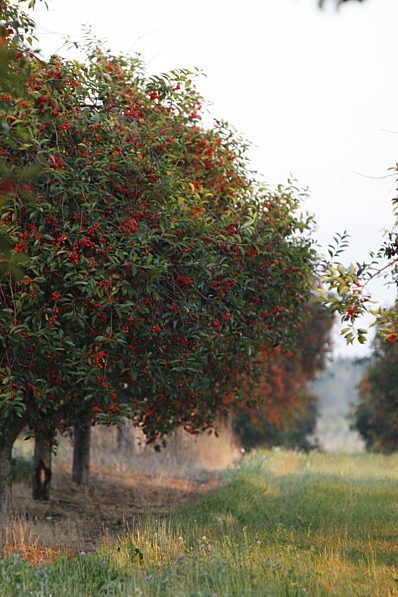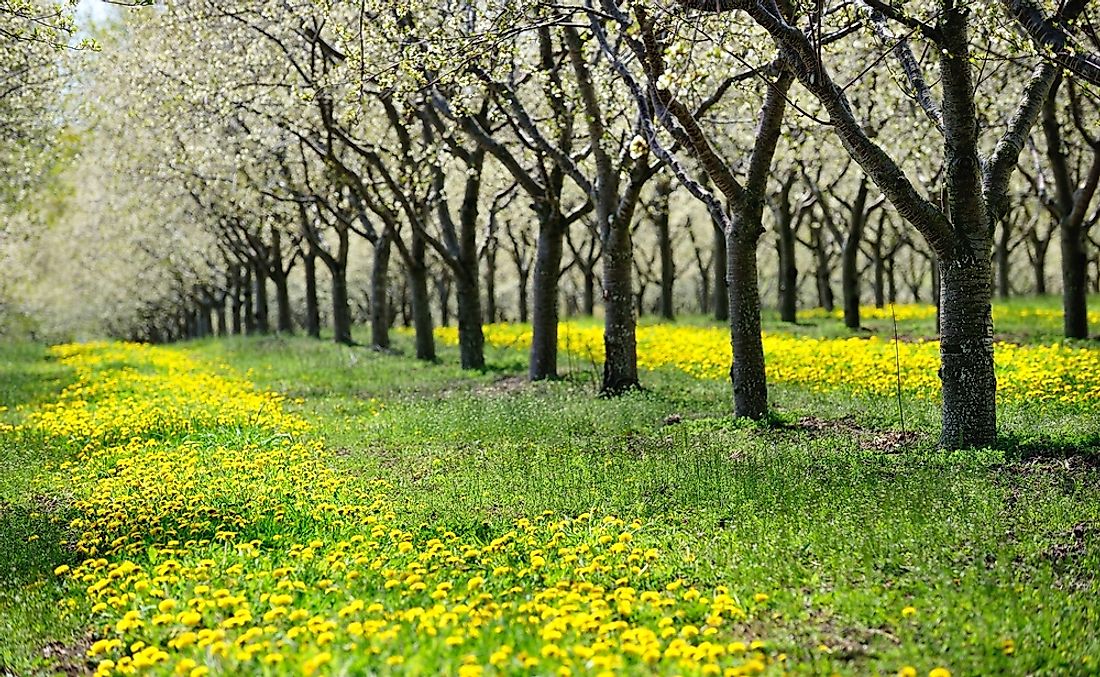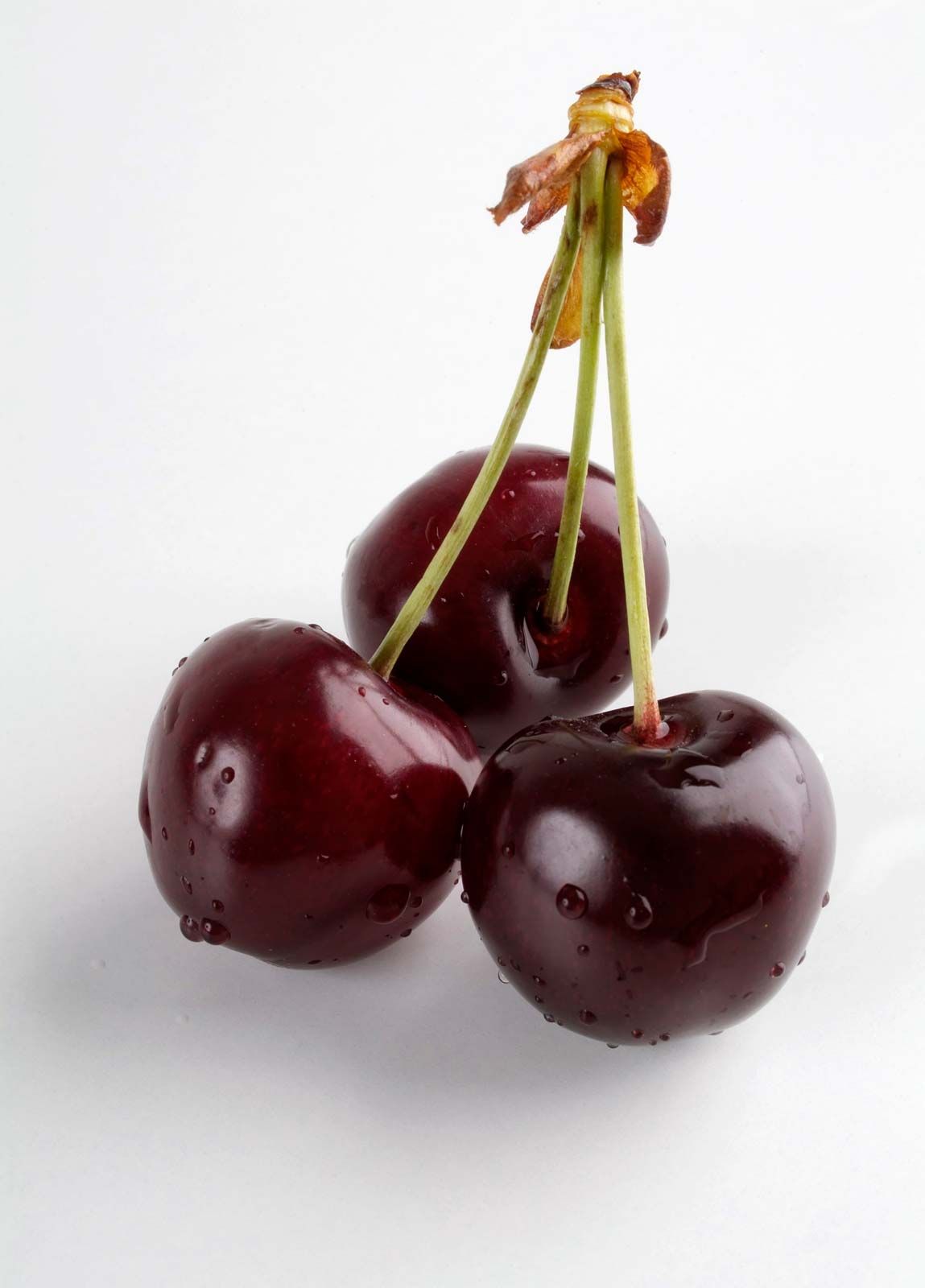Cherries, vibrant and succulent fruits loved by many, have a fascinating history that traces their origin back to ancient times. Delve into the origins of this delectable fruit as we explore the intriguing question: Where did cherries originate? Unveiling the historical roots of cherries sheds light on the journey they have taken, from their humble beginnings in the fertile plains of Asia Minor to their eventual spread across the globe. Discover how cherries have not only captured the hearts of people throughout history but have also become a cherished staple in various cuisines and cultures worldwide.

History of Cherries
Ancient Mesopotamia
Cherries have a long and fascinating history that dates back thousands of years. The story of cherries begins in ancient Mesopotamia, which is present-day Iraq. The fertile land between the Tigris and Euphrates rivers provided the perfect environment for wild cherry trees to thrive. The people of Mesopotamia were among the first to discover and enjoy the delicious taste of cherries. These early civilizations valued cherries not only for their flavor but also for their medicinal properties.
Greece and Rome
The cultivation and appreciation of cherries spread from Mesopotamia to Greece and Rome. The ancient Greeks and Romans were especially fond of cherries and considered them to be a luxurious and exotic fruit. Cherries became a prominent part of their culinary traditions, and they were often used in desserts and preserves. In Greek mythology, cherries were associated with fertility and were believed to have healing powers.
Spread to Europe
During the Roman Empire, cherries were introduced to Europe. It is said that the Roman general Lucius Licinius Lucullus brought cherry trees back to Rome after one of his campaigns in the region. From Rome, cherry cultivation gradually spread throughout Europe. The favorable climate and soil conditions in various European countries, such as Italy, France, and Germany, contributed to the successful cultivation of cherries. Cherry orchards became a common sight, and cherries became an integral part of European cuisines.
Introduction to the Americas
Cherries made their way to the Americas with the arrival of European settlers. The first cherry trees were planted in the United States in the late 1600s, specifically in the settlement of New Amsterdam, which is now New York City. Cherry trees quickly gained popularity throughout the American colonies due to their versatility and delicious taste. Today, the United States is one of the largest producers of cherries in the world.
Origin and Evolution of Cherries
Genus Prunus
Cherries belong to the genus Prunus, which includes other stone fruits such as peaches, plums, and apricots. Within the Prunus genus, there are several species of cherry trees, each with its own unique characteristics and flavor profiles. The most common species of cultivated cherries are Prunus avium (sweet cherries) and Prunus cerasus (sour cherries). These species have undergone extensive selective breeding to develop the varieties we enjoy today.
Wild Cherry Trees
Wild cherry trees, also known as bird cherries, are the ancestors of the cultivated cherry trees we know today. These wild cherry trees grow in various regions around the world, including Europe, Asia, and North America. They produce small, bitter fruits that are not suitable for direct consumption but have been used in traditional medicine and the creation of cherry liqueurs.
Domestication of Cherries
The domestication of cherry trees began thousands of years ago when early civilizations started cultivating and breeding cherry trees for desirable traits. Through selective breeding, humans were able to improve the taste, size, and color of cherries. The process of domestication led to the development of sweet cherries and sour cherries, which are the primary types of cherries cultivated for consumption today.

Cultivation of Cherries
Growing Conditions
Cherry trees thrive in temperate regions with distinct seasons. They require a certain number of chilling hours during winter to break dormancy, and they prefer a mild climate during the growing season. Well-draining soil is crucial for cherry tree cultivation, as excessive moisture can lead to root rot. Some cherry varieties are more tolerant of heat and humidity, while others require cooler climates.
Varieties of Cherries
There are hundreds of cherry varieties cultivated worldwide, each with its own unique characteristics. Sweet cherries are typically larger and juicier, with a mild to rich, sweet flavor. Popular sweet cherry varieties include Bing, Rainier, and Sweetheart. Sour cherries, on the other hand, are smaller and tart in taste, making them ideal for baking and preserves. Common sour cherry varieties include Montmorency and Morello.
Propagation Methods
Cherry trees can be propagated through various methods, including grafting, budding, and root cuttings. Grafting is the most common method used by commercial cherry growers. It involves joining a scion (a cutting of the desired cherry variety) onto a rootstock, creating a new tree that exhibits the desired traits. This method allows for the efficient production of uniform cherry trees with consistent fruit quality.
Cherries in Different Cultures
Cherries in Chinese Culture
Cherries hold significant cultural symbolism in China. They are associated with prosperity, longevity, and good fortune. During Chinese New Year festivities, cherries are often consumed and used as decorations to bring luck and happiness. Additionally, cherry blossoms are highly revered in Chinese culture and are a symbol of beauty and femininity. Cherry blossom viewing events, known as “Hanami,” are popular in China as well.
Cherries in Japanese Culture
In Japan, cherries hold deep cultural and historical significance. The cherry blossom, or “sakura,” is the national flower of Japan and represents the transient nature of life and the beauty of impermanence. The arrival of cherry blossoms in spring is a highly anticipated event, and people gather to celebrate the blooming trees through picnics and festivals. Japan is also renowned for its unique cherry varieties, such as the celebrated and delicate “Satsuma” cherries.
Cherries in European Culture
Cherries have been a part of European culture for centuries, with various countries embracing cherries in their culinary traditions. In Italy, cherries are used in desserts, gelato, and liqueurs. French cuisines utilize cherries in both sweet and savory dishes, including famous cherry clafoutis and classic French pastries. Germany is known for its cherry cake, or “kirschkuchen,” and cherry liqueurs like kirsch. Cherries are also celebrated in festivals across Europe, such as the famous Cherry Festival in the German town of Naumburg.

Cherries in Cooking and Medicine
Culinary Uses of Cherries
Cherries are a versatile fruit widely used in cooking and baking. Sweet cherries are often enjoyed fresh as a snack or used in desserts such as pies, tarts, and cobblers. Sour cherries, with their tangy flavor, are prized for making preserves, jams, and cherry sauces for savory dishes. Cherries pair well with chocolate, almonds, and other fruits, adding a burst of vibrant color and refreshing taste to various culinary creations.
Medicinal Benefits of Cherries
Cherries are not just delectable; they also offer health benefits. They are rich in antioxidants, including anthocyanins, which contribute to their bright red color. These antioxidants have been linked to reduced inflammation, improved sleep quality, and enhanced cardiovascular health. Cherries may also aid in muscle recovery, thanks to their natural anti-inflammatory properties. Additionally, cherries contain melatonin, a hormone that regulates sleep-wake cycles, making them a natural sleep aid.
Cherry Festivals and Traditions
International Cherry Blossom Festival
The International Cherry Blossom Festival is held annually in Macon, Georgia, in the United States. This festival celebrates the arrival of spring and the blooming of over 300,000 Yoshino cherry trees in the city. The festival features live music performances, parades, arts and crafts shows, and fireworks. Visitors from all over the world come to witness the breathtaking display of cherry blossoms and enjoy the festive atmosphere.
Cherry Blossom Viewing in Japan
Cherry blossom viewing, known as “Hanami,” is an integral part of Japanese culture. From late March to early May, people gather under the blooming cherry trees to enjoy picnics, music, and traditional performances. Hanami is a time for celebration and reflection, as the transient beauty of cherry blossoms serves as a reminder of the impermanence of life. This cherished tradition has been passed down through generations in Japan.
Cherry Festivals in the United States
In addition to the International Cherry Blossom Festival, the United States is home to several other cherry-themed festivals. Traverse City, Michigan, holds the National Cherry Festival, where visitors can enjoy cherry pie-eating contests, parades, and live music. The Door County Cherry Festival in Wisconsin showcases the region’s abundant cherry orchards and offers cherry-themed activities for all ages. These festivals highlight the cultural and economic importance of cherries in the United States.

Cherries in Art and Literature
Cherries in Paintings
Cherries have been a popular subject in art throughout history. In still-life paintings, cherries symbolize abundance, sensuality, and the fleeting nature of life. Artists like Caravaggio and Renoir depicted cherries in their works, capturing their vibrant colors and luscious textures. These paintings serve as a testament to cherries’ historical and cultural significance as a beloved fruit.
Cherries in Poetry and Literature
From ancient Greek poetry to modern literature, cherries have been mentioned in various literary works. In ancient Greek literature, cherries were often associated with love, desire, and fertility. They were mentioned in the works of poets such as Sappho and Homer. In modern literature, cherries continue to evoke themes of indulgence, temptation, and nostalgia. Cherries have found their place in countless poems, novels, and plays, adding a touch of symbolism and sensory richness to the written word.
Cherry Industry and Trade
World Production of Cherries
Cherries are grown and consumed in many countries worldwide, with production concentrated in certain regions. The leading producers of cherries include the United States, Turkey, and Russia. These countries have favorable climatic conditions and extensive cherry orchards that allow for high volumes of cherry production. The global trade of cherries is a significant part of the agricultural industry, with millions of tons of cherries exported and imported each year.
Major Cherry Exporting Countries
Several countries are major players in the international cherry trade. The United States is the largest exporter of cherries, supplying various countries with fresh cherries during the peak growing season. Other notable exporters include Turkey, Iran, and Chile. These countries have established themselves as reliable sources of high-quality cherries, meeting the global demand for fresh cherries year-round.

Challenges in Cherry Farming
Disease and Pest Management
Cherry farming faces numerous challenges, including the management of diseases and pests. Cherry trees are susceptible to various fungal diseases, such as cherry leaf spot and brown rot. Aphids, fruit flies, and birds are common pests that can damage cherry crops. Farmers employ various strategies, including regular tree inspection, pruning, and the use of biological controls, to combat these challenges and ensure healthy cherry orchards.
Climate Change Impact
Climate change poses a significant threat to cherry farming. Changes in temperature, rainfall patterns, and extreme weather events can disrupt the delicate balance that cherry trees require for optimal growth and fruit production. Warmer winters can reduce the chilling hours necessary for cherry tree dormancy, leading to inadequate fruit set. Erratic weather conditions can also increase the risk of disease outbreaks and damage to cherry blossoms and fruit. Farmers must adapt their cultivation practices and implement sustainable strategies to mitigate the impact of climate change on cherry farming.
Preserving Cherries
Canning and Preserving Cherries
To enjoy cherries year-round, they can be preserved through canning and other methods. Canning cherries involves placing the fruit in jars and sterilizing them with a hot water bath or pressure canning. The cherries can be canned in their natural juice or sweetened with syrup. Preserving cherries in this way allows them to retain their flavor and texture for future use in pies, sauces, or as a simple topping for ice cream.
Drying and Freezing Cherries
Drying and freezing are other popular methods for preserving cherries. Dried cherries make a sweet and tangy snack and can be used in baked goods or trail mixes. Freezing cherries is a simple way to preserve their freshness and nutritional value. Before freezing, cherries can be pitted and packed into airtight containers or freezer bags. Frozen cherries can be used in smoothies, jams, or as a convenient addition to fruit salads and desserts.
In conclusion, the history of cherries is deeply intertwined with human civilization, spanning ancient civilizations to modern-day festivities. Originating in Mesopotamia, cherries have played significant roles in various cultures, cuisines, and artistic expressions. Despite the challenges in cultivation and the changing climate, cherries continue to be cherished for their unique flavors, health benefits, and aesthetic beauty. Whether enjoyed fresh, cooked, or preserved, cherries are a beloved fruit that brings joy and enrichment to our lives.



